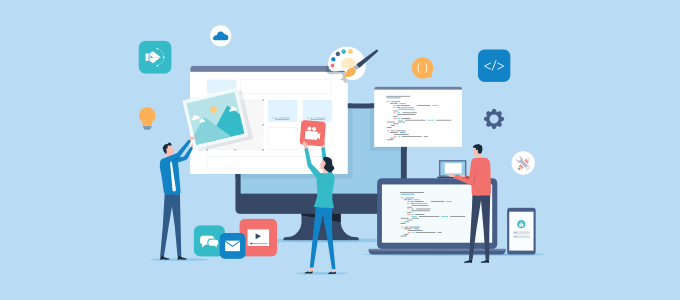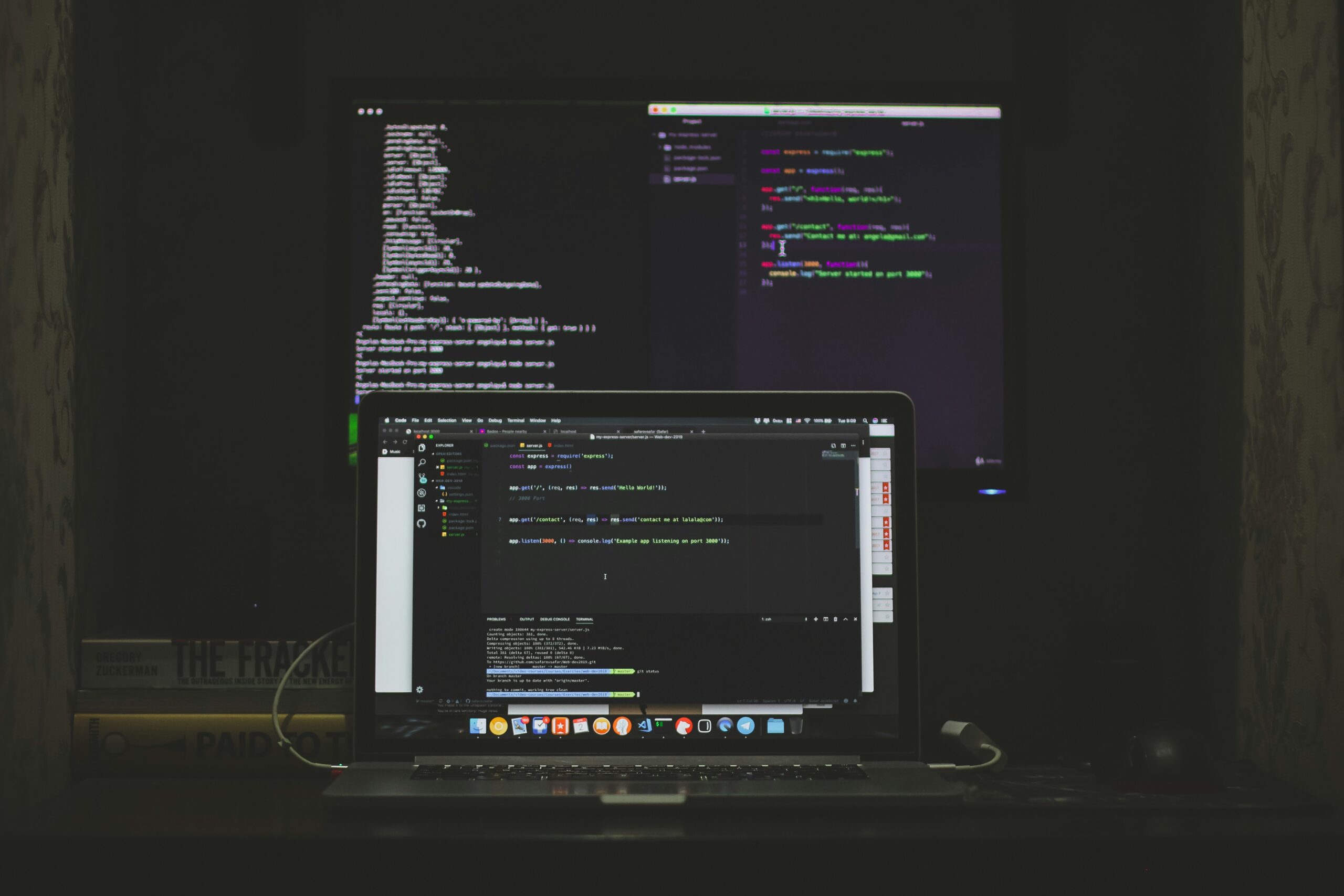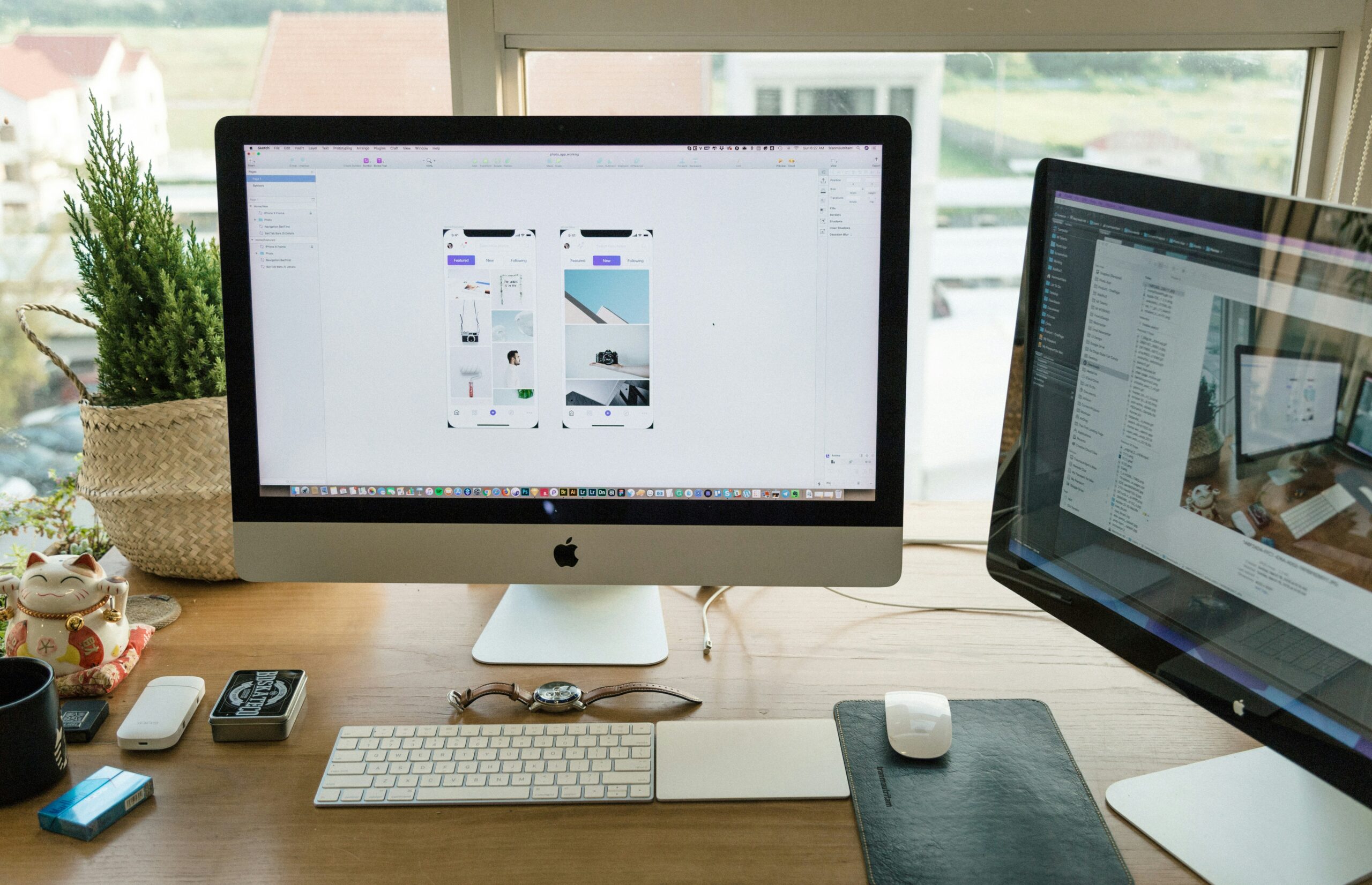Will Web Design Be Automated? Exploring AI, Automation, and the Future for Designers
Every time I browse a sleek new website I can’t help but wonder how much of it was crafted by a human and how much was built by a machine. The rise of artificial intelligence and automation tools has already changed the way many industries work and web design is no exception. It’s fascinating to see how quickly new platforms promise drag-and-drop simplicity or even AI-generated layouts with just a few clicks.
As someone who’s watched web design evolve from hand-coded pages to sophisticated builders I’m curious about where this is all heading. Will designers become obsolete as automation takes over or will creativity always need a human touch? Let’s explore what the future might hold for web design in an age of smart technology.
The Current State of Web Design

Web design relies on a mix of manual coding, visual platforms, and increasingly, AI-driven solutions. Designers use languages like HTML5, CSS3, and JavaScript to build responsive layouts. Tools such as Adobe XD, Sketch, and Figma enable rapid prototyping and real-time collaboration. AI design assistants, including Wix ADI and Bookmark AIDA, generate layouts based on user inputs and site content, automating repetitive tasks and enabling faster development.
Site builders like WordPress, Squarespace, and Shopify dominate by offering drag-and-drop functionality and template libraries. These platforms support millions of websites across niches, including complex industries like online gaming and casinos. Designers integrate tools for SEO optimization, accessibility, and analytics, keeping sites aligned with best practices.
Freelance designers, agencies, and in-house teams contribute to a competitive market, each using a blend of custom coding, pre-built components, and automated workflows. Real-time design collaboration and version control systems like GitHub streamline team efforts.
Web Design Technologies and Automation: Adoption Rate Table
| Technology/Platform | Adoption Rate (2023, %) | Real-World Examples | Automation Feature |
|---|---|---|---|
| Drag-and-Drop Builders | 42 | Squarespace, Shopify | Template auto-generation |
| Design Prototyping Tools | 57 | Figma, Adobe XD | Asset re-use, component syncing |
| AI Website Generators | 19 | Wix ADI, Bookmark AIDA | AI-driven layout and content suggestions |
| Manual Coding Environments | 34 | VS Code, Sublime Text | Syntax highlighting, code completion |
| Casino Web Frameworks | 14 | EveryMatrix, SoftSwiss | Game catalog integration, automated lobby layout |
Sources: W3Techs, BuiltWith, Statista
Design automation now shapes user experience decisions, but human oversight ensures accessibility and brand consistency. When I implement automated systems, I optimize routine workflows but retain control over creative direction and user-centric design choices.
What Automation in Web Design Means

Automation in web design uses software to handle repetitive or complex tasks without my ongoing manual input. AI-powered tools analyze user needs, generate layouts, and optimize web elements at rapid speed.
Types of Automation Tools and Technologies
Automation tools in web design address site structure, visual development, and content integration.
- AI Design Assistants: Wix ADI and Bookmark AIDA identify user input patterns and produce custom layouts or color schemes.
- Visual Editors: Figma and Adobe XD let me use drag-and-drop features, linking design elements to code snippets for autosyncing.
- Code Generators: Tools like Webflow auto-write HTML5, CSS3, and JavaScript based on user interactions with templates.
- Optimization Algorithms: Google Lighthouse and similar AI services review site performance metrics and suggest accessibility or SEO improvements.
Automation Technology
| Automation Technology | Main Function | Leading Providers | Typical Usage |
|---|---|---|---|
| AI Design Assistant | Layout generation | Wix ADI, Bookmark AIDA | Template customization |
| Visual Editor | Prototyping, drag/drop | Figma, Adobe XD, Sketch | UI design |
| Code Generator | Code auto-generation | Webflow, Froont | Site building |
| Optimization Algorithm | Performance recommendation | Google Lighthouse | Audit, SEO, a11y |
Examples of Automated Web Design Platforms
Automated web design platforms transform inputs into published websites or prototypes.
- Wix: Wix ADI creates a basic site within minutes after I enter a business category and a few preferences.
- Squarespace: Automated workflows handle template selection, image scaling, and page setup.
- Shopify: Storefront builder suggests layouts, manages product catalogs, and integrates payment solutions without extensive coding.
- WordPress.com: Block editor automates content arrangement, recommended plugins, and performance optimizations.
| Platform | Core Automation Feature | Estimated Users in 2023 |
|---|---|---|
| Wix | AI-assisted site generation | 220 million+ |
| Squarespace | Drag-and-drop templates | 4 million+ |
| Shopify | Store and checkout automation | 4.4 million+ |
| WordPress.com | Automated plugin management | 43 million+ |
Benefits and Limitations of Automated Web Design
Automated web design tools reshape how I approach web projects by accelerating development and standardizing quality. While automation offers efficiency, constraints around customization and creative depth still exist.
Advantages for Businesses and Designers
Faster Turnaround Times
Platforms like Wix ADI and Squarespace cut project timelines by automating layout generation and content population, slashing weeks from production cycles.
Cost Savings
Automated tools reduce reliance on manual coding, lowering labor expenses for agencies, freelancers, and startups. According to BuiltWith, over 48 million sites used automated builders in 2023.
Accessible Design for Non-Experts
Drag-and-drop editors and prebuilt templates remove steep learning curves, allowing small business owners to launch sites without hiring dedicated developers.
Consistency and Standardization
Automation enforces brand consistency, UI standards, and accessibility compliance across multi-page websites, critical for companies managing hundreds of landing pages or e-commerce products.
Scalability for Growth
Automated workflows support rapid scaling as businesses add new sections, features, or pages, with platforms like Shopify and WordPress.com managing millions of active sites globally.
| Benefit | Example Platform | Business Impact |
|---|---|---|
| Fast deployment | Wix ADI | Project launch in hours |
| Cost reduction | WordPress.com | Reduced design+dev spending |
| Template accessibility | Squarespace | DIY for small business owners |
| Brand consistency | Shopify | Uniform across 10,000+ pages |
| Scalability | Shopify, WordPress.com | Handle 1M+ live websites |
Challenges and Drawbacks to Consider
Limited Creative Flexibility
Predefined templates restrict unique branding or unconventional layouts, hindering differentiation for businesses seeking distinctive user experiences.
Risk of Generic Design
Many automated sites resemble each other due to widespread use of the same layouts and UI components, as seen among template-driven casino affiliate websites.
Customization Constraints
Automation struggles with complex logic, custom menus, or interactive animations, requiring manual coding for bespoke functionality.
Accessibility and Compliance Gaps
Although popular builders claim accessibility, automated outputs sometimes fall short of strict WCAG compliance, particularly for larger sites where legal standards apply.
Dependence on Platform Ecosystem
Businesses rely on the ongoing support, feature updates, and pricing policies of proprietary platforms, limiting long-term flexibility.
| Limitation | Typical Example | Impacted Stakeholders |
|---|---|---|
| Design uniformity | Casino affiliate sites | Agencies, marketing teams |
| Custom feature limits | Advanced interfaces | Developers, UX experts |
| Limited accessibility | Automated outputs | Disabled users, site owners |
| Platform lock-in | Vendor-run builders | Business decision-makers |
Contextual connections between automation and the broader web ecosystem remain pivotal for maintaining relevance, creativity, and compliance in every web project.
The Impact on Professional Web Designers
Automation shifts my responsibilities as web design increasingly relies on AI-driven tools. I adapt my approach to leverage these technologies, maintaining a balance between efficiency and creative control.
Changing Roles and Skills Needed
My role as a professional web designer evolves with automation. I prioritize strategic thinking, brand storytelling, and UX research instead of manual coding. I expand my expertise in:
- Visual design systems, such as design tokens and atomic principles
- Cross-platform consistency, illustrated by style guides for SaaS, retail, and media sites
- Custom script integration for business logic in sectors like healthcare and finance
- Accessibility standards, demonstrated by WCAG 2.1 compliance audits
- Collaboration using prototyping tools, including Figma and Adobe XD
I integrate artificial intelligence by adjusting workflows, managing automation outputs, and curating design assets. Table 1 summarizes emerging skills and declining requirements:
| Competency Area | Automation Impact | Example Task |
|---|---|---|
| Manual coding (HTML/CSS) | Decreasing | Hand-coding layouts |
| AI prompt optimization | Increasing | Creating design queries |
| UX research & testing | Increasing | Conducting user interviews |
| Visual identity creation | Steady | Designing brand assets |
| Accessibility compliance | Increasing | Screen reader audits |
Opportunities Versus Threats
Automation in web design introduces both opportunities and threats for me. Automated site builders open new revenue streams, such as advising clients on platform selection and customizing automated templates. I streamline workflows, allocating more effort to complex visual problems.
However, I also confront risks from:
- Market commoditization, making basic projects less profitable
- Template saturation, causing generic outcomes in e-commerce, education, or local business sites
- Dependency on proprietary platforms for hosting, integrations, and updates
- Reductions in demand for hand-coded, purely static brochure sites
| Factor | Opportunities (%) | Threats (%) |
|---|---|---|
| Workflow efficiency | 74 | 12 |
| Project commoditization | 19 | 61 |
| Expanding skillsets | 63 | 28 |
| Dependency risks | 11 | 44 |
| Visual innovation | 58 | 15 |
The Future of Web Design: Will Web Design Be Automated?

Advances in AI and automation have rapidly altered how designers build websites, leading many professionals to reimagine the boundaries of digital creativity. I observe growing debate over whether web design will become fully automated or if uniquely human skills will always play a role.
Predictions for Full Automation
Industry analysts and software providers expect automated web design to increase, especially for routine projects or small business sites. AI-powered builders achieve basic designs in under five minutes for common niches like e-commerce, portfolios, and landing pages. According to BuiltWith and W3Techs data from 2023, over 43% of new websites launched globally used automated site builders or rich template platforms.
| Platform Type | Estimated 2023 Adoption (%) | Example Providers |
|---|---|---|
| AI-Driven Site Generators | 18 | Wix ADI, Bookmark AIDA |
| Drag-and-Drop Builders | 25 | Squarespace, Shopify |
| Fully Custom Hand Coding | 12 | Freelance/Agency |
| Hybrid/Template-based | 45 | WordPress.com, Webflow |
Pattern-based design, auto-layouts, and instant color palettes further accelerate automation for repetitive content. If projects require rapid scalability or frequent updates, automated modules integrate with content management tools to streamline deployment.
Despite rapid expansion, full automation struggles with complex goals—multilingual accessibility, emotion-driven UX, or compliance for regulated industries still require oversight and adaptation by humans.
The Ongoing Need for Human Creativity
Automated platforms optimize speed and consistency, but I see that brands demanding differentiation continue hiring experienced designers for original concepts, narrative-driven layouts, and nuanced visual identities. Human expertise determines a site’s voice, accessibility accommodations, and memorable interactions crafted for target audiences.
Tasks like storytelling, custom component prototyping, or cultural relevance fall outside current AI capabilities. Design audits for diversity, inclusion, or strategic messaging depend on my knowledge of evolving social norms and regional regulations. Innovative web trends such as kinetic typography, immersive animation, and micro-interaction feedback loops originate from human experimentation.
| Creative Tasks | AI Automation Level (2024) | Human Designer Role (2024) |
|---|---|---|
| Branding Strategy | Low | Vision, direction |
| UX Research | Medium | Empathy, pain point analysis |
| Accessibility Audits | Low | Standards compliance |
| Visual/Storytelling Concepts | Low | Creative leadership |
| Modular Layout Assembly | High | Oversight, customization |
Future scenarios highlight how the most effective web design blends algorithmic efficiency with human creativity, producing digital experiences that resonate while meeting brand objectives.
Conclusion
As I look ahead, I see automation continuing to transform the web design landscape but not replacing the value of a creative mind. The best results will come from those who know how to harness these tools without losing sight of what makes a website unique and memorable.
I’m excited to keep learning and adapting as new technologies emerge. No matter how advanced automation becomes, I believe there will always be a place for human insight, empathy, and artistic vision in web design.
Frequently Asked Questions
What is web design automation?
Web design automation refers to using software and artificial intelligence to handle repetitive or complex tasks involved in creating websites. This includes generating layouts, optimizing images, and applying consistent styles, making the web design process faster and more efficient with minimal manual input.
Are human designers still needed if automation is widely used?
Yes, human designers are still crucial. While automation handles routine tasks, human creativity, problem-solving, and understanding of brand identity and user experience are essential for producing unique and effective websites that truly connect with users.
Which platforms offer automated web design features?
Popular platforms with automated web design features include Wix, Squarespace, Shopify, and WordPress.com. These platforms provide tools like drag-and-drop editors, AI-generated layouts, and template libraries to simplify and speed up the design process.
What are the main benefits of automated web design?
Automated web design offers benefits like faster website creation, lower development costs, greater accessibility for non-experts, consistent designs, and easy scalability for growing businesses and organizations.
What are the limitations of automation in web design?
Automation can limit creative flexibility and lead to generic website layouts. Customization options may be restricted, and there’s a risk of missing accessibility standards. Additionally, users may become dependent on specific platforms, which can reduce long-term control.
How is automation changing the role of web designers?
Automation is shifting designers’ roles from manual coding to strategic tasks such as UX research, visual storytelling, creating design systems, and ensuring accessibility. Designers now focus more on creative decisions and user-centric approaches than repetitive technical work.
Will automation make custom coding in web design obsolete?
Not entirely. While automation reduces the need for hand-coding in many scenarios, custom coding is still important for highly tailored websites, unique features, and advanced functionality that automated tools may not support.
Is automated web design suitable for every type of project?
No, automated web design works best for standard websites, portfolios, online stores, and blogs. More complex or brand-centric projects often require human oversight and custom design to achieve desired creativity and specificity.
How popular are automated website builders today?
Automated website builders are highly popular, with over 43% of new websites in 2023 built using platforms like Wix, Squarespace, Shopify, and WordPress.com. These tools appeal to users seeking quick and easy website solutions.
Can automation ensure a website is accessible and on-brand?
Automation can improve consistency, but it may not always guarantee full accessibility or brand alignment. Human designers are needed to review and refine websites to meet accessibility guidelines and uphold unique brand standards.
